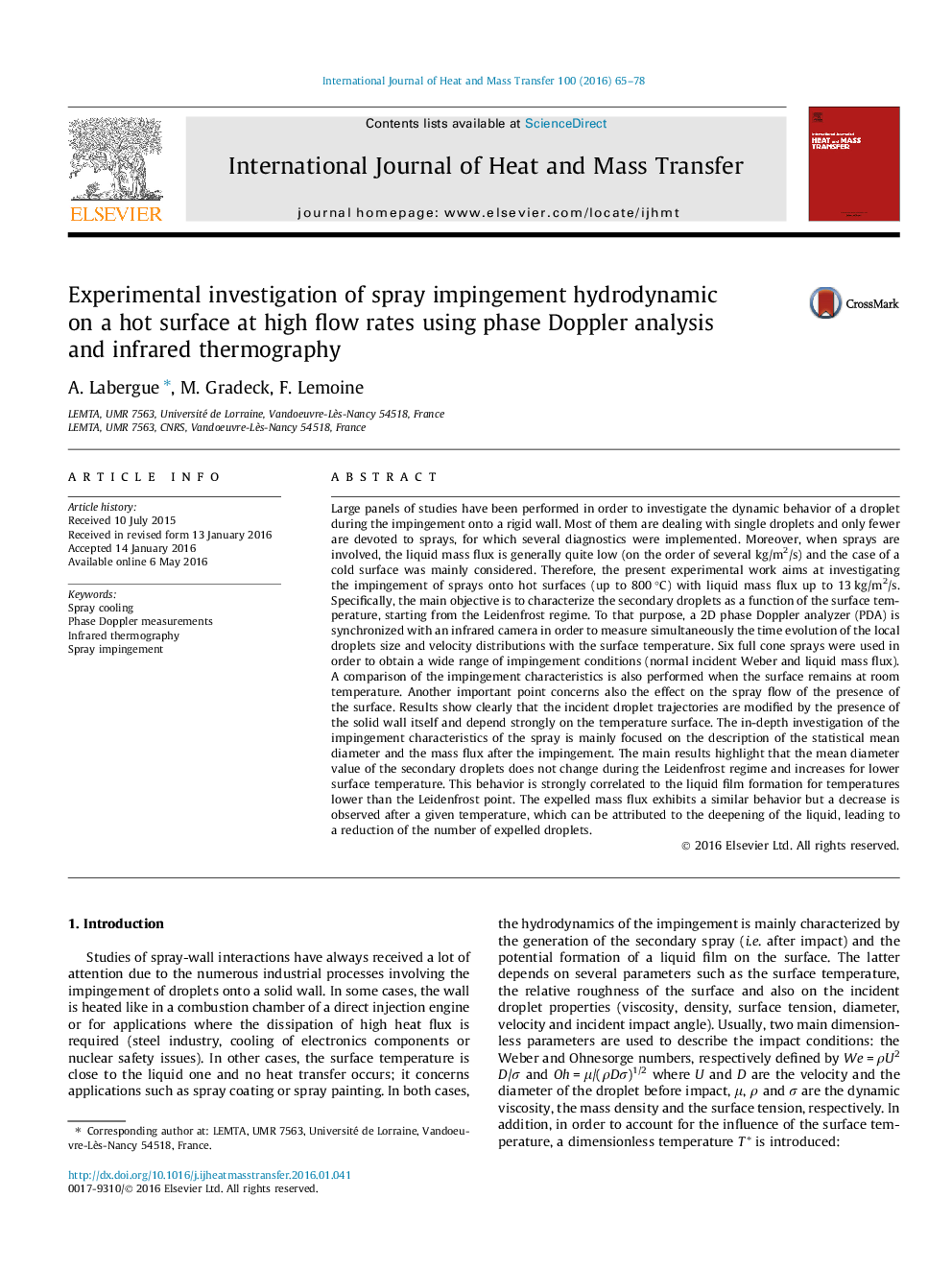| Article ID | Journal | Published Year | Pages | File Type |
|---|---|---|---|---|
| 656338 | International Journal of Heat and Mass Transfer | 2016 | 14 Pages |
•A specific set-up is built to analyze the characteristics of sprays impingement.•The effect of the presence of the disk, often neglected, is studied.•The droplets properties are discussed as a function of the wall temperature.•The link between secondary droplets properties with heat flux is performed.
Large panels of studies have been performed in order to investigate the dynamic behavior of a droplet during the impingement onto a rigid wall. Most of them are dealing with single droplets and only fewer are devoted to sprays, for which several diagnostics were implemented. Moreover, when sprays are involved, the liquid mass flux is generally quite low (on the order of several kg/m2/s) and the case of a cold surface was mainly considered. Therefore, the present experimental work aims at investigating the impingement of sprays onto hot surfaces (up to 800 °C) with liquid mass flux up to 13 kg/m2/s. Specifically, the main objective is to characterize the secondary droplets as a function of the surface temperature, starting from the Leidenfrost regime. To that purpose, a 2D phase Doppler analyzer (PDA) is synchronized with an infrared camera in order to measure simultaneously the time evolution of the local droplets size and velocity distributions with the surface temperature. Six full cone sprays were used in order to obtain a wide range of impingement conditions (normal incident Weber and liquid mass flux). A comparison of the impingement characteristics is also performed when the surface remains at room temperature. Another important point concerns also the effect on the spray flow of the presence of the surface. Results show clearly that the incident droplet trajectories are modified by the presence of the solid wall itself and depend strongly on the temperature surface. The in-depth investigation of the impingement characteristics of the spray is mainly focused on the description of the statistical mean diameter and the mass flux after the impingement. The main results highlight that the mean diameter value of the secondary droplets does not change during the Leidenfrost regime and increases for lower surface temperature. This behavior is strongly correlated to the liquid film formation for temperatures lower than the Leidenfrost point. The expelled mass flux exhibits a similar behavior but a decrease is observed after a given temperature, which can be attributed to the deepening of the liquid, leading to a reduction of the number of expelled droplets.
